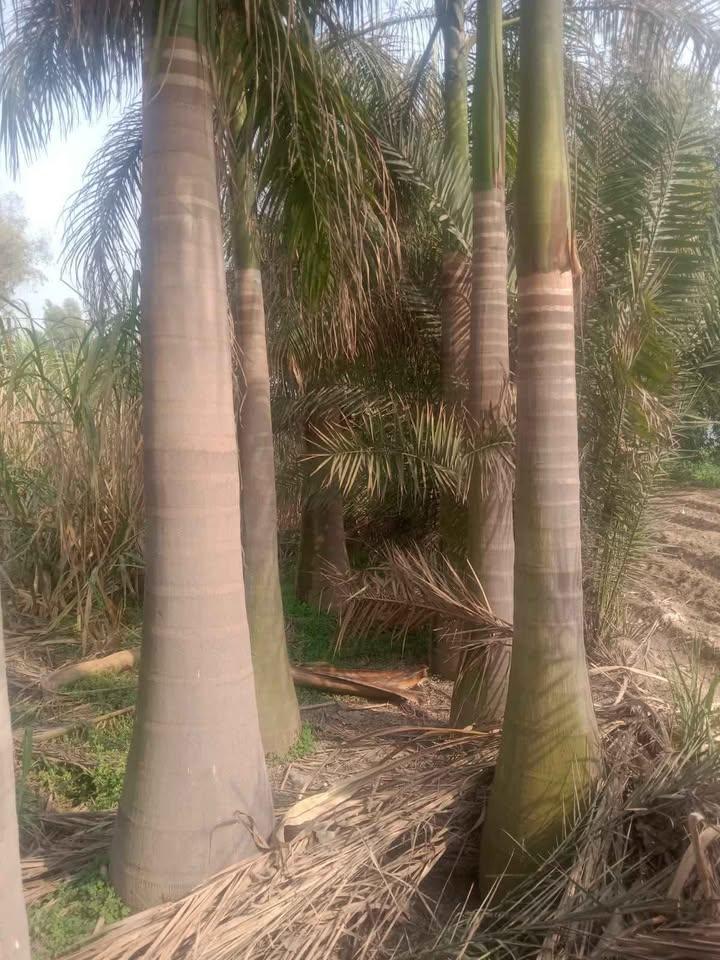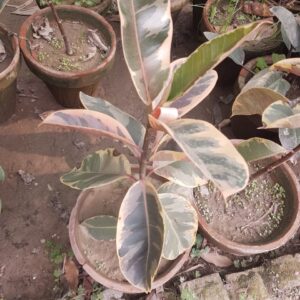The Bottle Palm “🌴✨ The Sculpted Jewel of Tropical Gardens – The Bottle Palm
The Bottle Palm, scientifically known as Hyophorbe lagenicaulis, is an attractive palm tree that grows slowly and is known for its unique, bottle-shaped, bulbous trunk—from which it gets its name. This rare and endangered species, which is indigenous to the Mascarene Islands (especially Round Island near Mauritius), is currently widely farmed in warm climes throughout the world due to its distinctive shape and tropical beauty.
The Bottle Palm, although little, has a significant effect on any environment. It is a favorite choice for patios, poolside areas, resorts, and opulent garden designs because of its tidy appearance and simple growth pattern.
Botanical summary
Hyophorbe lagenicaulis is the scientific name.
Popular Names: Bottle Palm, Palmiste gargoulette
Family: Arecaceae (Palm family)
Mauritius’s Round Island is the source of this.
Kind: A slow-growing palm that grows alone.
Mature height ranges from 10 to 12 feet (3 to 4 meters).
6–8 feet is the range of the spread.
Leaf: four to six dark green, 6-foot-long, arching pinnate fronds
Trunk: Starts out thick and bottle-shaped at the bottom, then gradually thins out as it approaches the crownshaft.
Flowers: Creamy-white, little, on branching inflorescence
Fruits: Small, round to oval, black when ripe
Requirements for Sunlight and Climate
Sunlight:
Does well in direct sunshine but can handle some shade
The greatest leaf hue and development occur under strong, direct sunlight.
Temperature Range:
likes the range of 20°C to 35°C better.
Susceptible to cold: Can sustain harm at temperatures below 4°C
Not resistant to frost; in chilly areas, bring inside or protect.
USDA Zones:
10b–11 (tropical to subtropical)
Ideal for urban courtyards, beachside gardens, or tropical environments in warm regions.
Watering Requirements
Young Palms:
Water two to three times a week during establishment
Keep the soil consistently moist, but not wet.
Palms That Are Mature
In dry weather, water thoroughly once every 7 to 10 days.
Water less during the winter and rainy months.
When established, Bottle Palms are somewhat drought-tolerant, but they don’t like prolonged dryness or very wet soil.
🌱 Soil Choices
Kind:
favors rocky, loamy, or sandy soil with good drainage
Stay away from water-retaining or dense clay soils.
The pH range is between 6.0 and 7.0, which is between slightly acidic and neutral.
Use coconut coir or organic compost to enhance the soil, increasing drainage and aeration.
🌾 Routine for Fertilizing
Autumn through spring:
Every three to four months, apply a palm fertilizer that releases slowly.
Look for combinations that include magnesium, potassium, and manganese.
Winter:
When growth slows, there is no need to eat.
A lack of certain nutrients, such as seaweed extract or Epsom salt (magnesium sulfate), can often manifest as yellowing tips or necrotic patches.
Maintenance and pruning
Requirements for pruning:
Extremely low; just take out any yellow or dead fronds.
Never trim excessively; avoid cutting green leaves as it weakens the palm.
Cleaning:
To keep up appearance, clean the crownshaft area gently.
Natural rings or scars may form on the trunk, enhancing its aesthetic appeal.
Avoid harming the enlarged trunk base, which is the plant’s defining characteristic and area for water storage.
🌿 Propagation
Seeds:
Primary technique: plant fresh seeds in warm, wet, well-drained soil.
6–12 weeks or more for germination
Patience is necessary because development is gradual, particularly in the first several years.
Propagation by division is not possible since it does not generate suckers or offshoots.
🐛 Diseases and pests
Typically devoid of pests, but keep an eye out for:
Mealybugs
Insects that scale
Spider mites (inside)
Conditions:
Overwatering causes root rot.
Leaf spot brought on by fungal diseases in high humidity
Use insecticidal soap, neem oil, or isopropyl alcohol sprays to treat infestations. Stay away from standing water and high humidity.
🌴 Decorative and Environmental Significance
Ideal for:
planting specimens in tiny gardens
Using containers to grow plants on balconies and patios
Coastal or pool-side landscaping
gardens with a Mediterranean or tropical theme
Advice on design:
Best planted alone or with low ground covers to accentuate the trunk’s form
Pair with lava rocks, gravel mulch, or decorative grasses for contrast.
Exceptionally photogenic, making it a common choice for Instagram-worthy locations, wedding gardens, and resort landscapes.
Conclusion
The Bottle Palm is a genuine tropical gem, being small, beautiful, and well-designed. Its unique thick trunk, gorgeous feather-like fronds, and low maintenance requirements make it a perfect palm for homeowners and professional landscapers seeking a striking yet easy-to-care-for tree.
The Bottle Palm is a sculptural marvel that brings immediate tropical opulence to any environment, whether grown in the soil or in big, beautiful pots.”
Bottle palm
₨999.00
“The distinctive and striking palm known as the Bottle Palm (*Hyophorbe lagenicaulis*) gets its name from its thick, bottle-shaped trunk, which acts as a water storage. This beautiful palm, which originates in the Mascarene Islands (especially Round Island off Mauritius), is valued for its tropical appeal and artistic shape.
The Bottle Palm has a green crownshaft, a smooth, gray trunk, and a little canopy of 4 to 6 feathery fronds. It does well in warm weather, full sun, and well-drained soil. Although it is somewhat drought-resistant after it has been established, it thrives with frequent watering and frost protection. The Bottle Palm is a common statement or focal point plant in landscapes and containers, making it perfect for patios, poolside planting, and tropical-themed gardens.”





Reviews
There are no reviews yet.